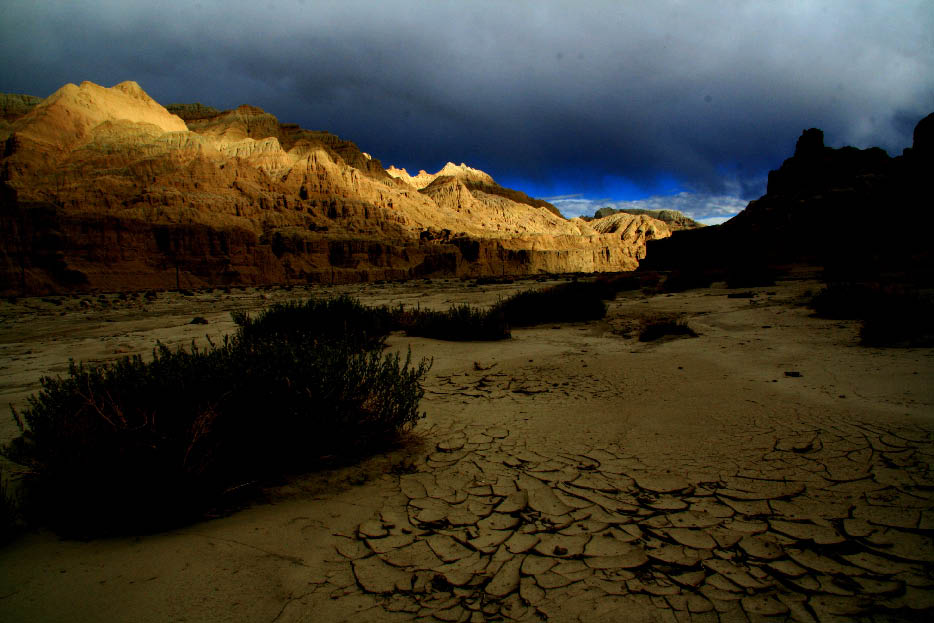|
Influenced by the warm and humid airflow from Bengal Bay, Burang is a rare paradise for farming compared with other regions in Ngari Prefecture. Burang County lies in the valley belt of the south Himalayas. At an elevation of 3,700 meters it occupies the lowest territories of the prefecture. Its annual grain yield represents one-third of that of the whole prefecture, giving it the deserved reputation as the granary of Ngari.
Burang is famed for the Holy Mountain Gang Rinpoche and the Sacred Lake Mapam Yumco. Another famous Ghost Lake, La'nga Co near Mapam Yumco, is also worth a visit.
Driving south towards Mapam Yumco the road from Barga is as straight as an arrow. I rarely glimpsed a living thing, giving me the impression I was the first person to set foot on this steppe. The day was cloudy, and from the car window to the horizon stretched gray-blue water with a halo of rolling green.
Big cobbled pathways are a common sight in Burang. In every village there is a devotional walkway parallel to the village road. On the roadsides orderly piles of Mani stones are decorated with prayer flags fluttering in the wind. Nearby rise two big prayer wheels whose tops are equipped with a windmill made of four plastic bowls. In a strong wind, the big blades whir as if they were as light as a child's toy.
The southwestern Burang adjoins India and Nepal and the border area is a must-see. The road from Korqag Village to the border area is lush with greenery and splashed with colorful wild flowers. Until I got to the border area I couldn't see any signs that marked the border. The only place that bore signage was a stone at the bank of the river inscribed with Chinese characters meaning "parking lot." Not far away at the summit of a mountain you can see a white house which is probably the frontier post. On the other side of the river is Nepal.
In northwestern Burang Town, seat of Burang County, there is the "Nepal Mansion," a tangle of dozens of natural shelters known far and wide. The so-called mansion, a cliffside honeycomb of caves, stands a few tens of meters high and festooned with prayer streamers. Most of the caves are used as lodgings by traveling Nepalese businessmen and pilgrims. Wood and clay Buddhist statues decorate some of them.
Beside the Nepal Mansion built into the steep precipices is the ancient Lhakhang Monastery. Wooden scafolding and stairs connect the different layers of caves. Stretching out of the cliffs as if hovering in midair, they've earned the place the local name "hanging monastery."
With a tradition of frontier trade amounting to about 500 years, Burang has seen frequent communication and a thriving trade between the inhabitants of China, India and Nepal. At the close of the 1950s, the Chinese government officially approved the establishment of the Burang International Market, where the Nepalese traders are allowed to build their shops and sell various Nepalese products. The annual land use tax is as low as RMB 1 for each room the traders occupy. The products they carry include cloth, bed sheets, heavy woolen cloth, brown sugar, perfume, jewelry, cosmetics, jade items, and various Nepalese fresh and dried fruits.
Mesas and the Guge Kingdom Ruins
 |
|
The topography is a result of violent geological changes.
Photos by Wang Ying |
| 